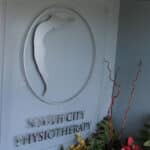Chronic pain is a silent epidemic affecting some 10 million Canadians. It ranges from mildly debilitating to com-pletely disabling. But why do some patients suffer so much?
When facing chronic pain, the following factors must be taken into consideration :
- Is it coming from ongoing nociception or inflammation?
- Is it due to psychological factors such as depression?
- Or is it the result of functional and structural alterations within the central or peripheral nervous systems?
The term neuropathy (or radiculopathy) has been applied to the last category. Neuropathic pain often arises and persists indefinitely in the absence of a detectable permanent injury or inflammation. It is in the treatment and management of this category of chronic pain that Intramuscular Stimulation (IMS) can play a significant role.
CAUSES OF NEUROPATHY :
The causes of neuropathy are as numerous as those of nerve damage : they may include neoplasm, trauma, and vascular, metabolic, infectious and degenerative changes. But the most common cause, since it is near-universal, is spondylosis (or degenerative changes).
Ordinarily, spondylosis follows a gradual, relapsing, and remitting course that is silent – unless and until symptoms are precipitated by an incident (often so minor that it passes unnoticed by the patient). What becomes interesting is that with an acute injury to a healthy nerve, there is no prolonged discharge of pain signals, whereas the same injury to a previously irritated nerve (neuropathic nerve) can cause a sustained discharge. This is one of the rea-sons why some people develop severe pain after an apparently minor injury, and why that pain can continue be-yond a reasonable period.
CLINICAL FEATURES OF NEUROPATHIC PAIN:
Most clinical neuropathies are of mixed pathology including axonal degeneration and segmental demyelination. Routine laboratory and radiological tests are unfortunately unhelpful, but could still be indicated to rule out serious pathology. Therefore, neuropathy is determined principally by clinical examination.
So look for the following features:
- Pain in the absence of an ongoing tissue-damaging process.
- Delay in onset after precipitating injury (if any). Typically, causalgic pain appears within one week following nerve injury, but its onset may be delayed by as much as 3 months.
- Abnormal or unpleasant sensations such as burning or searing pain or deep, aching pain.
- Pain felt in region of sensory deficit.
- Brief shouting or stabbing pain.
- A mild stimulus causing extreme pain (Excessive tenderness to digital pressure is not a normal feature of muscles because their mechano receptors are located deep within the muscle and have high thresholds).
- Pronounced summation and after-reaction with repetitive stimuli (pain after repetitive work or over training).
- Loss of joint range or pain caused by the mechanical effects of muscle shortening.
AUTONOMIC MANIFESTATIONS OF NEUROPATHY:
Vasomotor : vasoconstriction generally differentiates neuropathic pain from inflammatory pain; with neuro-pathic pain affected parts are perceptibly colder and retained catabolites from ischemia may exacerbate the pain.
Pilomotor and sudomotor : there can be an interaction between pain and autonomic phenomena. A stimulus such as chilling, which excites the pilomotor response, can precipitate pain and vice versa; pressure upon a tender motor point can provoke the pilomotor and sudomotor reflexes.
Trophedema and trophic changes : may occur in skin and nails and there may be dermatomal hair loss. Tro-phedema can be found over affected regions by skin rolling test or matchstick test.




Any of the above features should raise suspicion of neuropathic pain.

CANNON AND ROSENBLUETH’S LAW OF DENERVATION
This law is crucial to the understanding of the treatment of chronic pain with IMS, but is not often known. In simple words, it shows that when a nerve is below par and is not functioning properly (as in neuropathy), it becomes su-persensitive! This super sensitivity can also occur in many structures of the body including skeletal muscle, smooth muscle, spinal neurons, sympathetic ganglia, adrenal glands, sweat glands and even brain cells.
 THE SHORTENED MUSCLE SYNDROME:
THE SHORTENED MUSCLE SYNDROME:
(or what chronic pain should be called?) Of all structures that can become supersensitive, the most com-mon one is striated muscle. It is seen in patients as shortened muscles and can be palpated as ropey bands within the muscle. What is interesting is that these bands can be present in paraspi-nal muscles as well.
SPECIFIC EFFECTS OF MUSCLE SHORTENING :
- Can produce primary muscle pain from pressure of intra-muscular nociceptors,
- It can mechanically stress tendons, as seen in tendonitis, tenosynovitis, etc.
- Or it can alter alignment and restrict range of motion in joints and later lead to degenerative arthritis,
- Additionally, it can put pressure on a nerve and produce an entrapment syndrome,
- And very importantly, paraspinal muscles can create pres-sure across a disc space and perpetuate neuropathy or lead to disc degeneration.
TREATMENT OF CHRONIC PAIN WITH IMS :
IMS is a complete system for the diagnosis and treatment of myofascial pain syndromes. It blames pain on unwell nerves. It borrows its needle technique from traditional Acupuncture, but updates and enhances it with anatomy and neurophysiology.
TREATMENT GOALS :
The primary goal is to desensitize supersensitive structures and restore motion and function.
IMS is unique in the way it releases muscle tension in deep paraspinal muscles that compress nerve roots. No other modality has been proven to be as effective in doing this. A stretch receptor in the muscle is stimulated, pro-ducing a reflex relaxation.
It also promotes healing. Needling produces local inflammation which is the necessary prelude to healing; growth factors such as platelet derived growth factor (PDGF) are released. PDGF attracts cells to the damaged area and induces cells to proliferate.
The introduction of the needle into tissue creates minute injuries and also generates a small amount of electricity. This current of energy remains in effect for several days. This will assist in making the nerve function normally again as neuropathy only responds to a physical input of energy.
HOW DOES IMS WORK?
The treatment involves dry needling of affected areas of the body without injecting any substance. The needle sites can be over tight muscle bands or can be near the spine to release tight deep paraspinal muscles.
Penetrating of a needle into a normal muscle is painless; however, a supersensitive muscle or shortened muscle will grasp the needle in a way that can be described as a cramping sensation. This sensation only lasts for a short time and a feeling of muscle relaxation is often felt immediately following treatment.
In effect, IMS treats the underlying neuropathic condition that causes the chronic pain. When properly and com-pletely performed IMS has a remarkable success rate.
References :
Cannon W B, Rosenblueth A : The Supersensitivity of Denervated Structures. New York, The MacMillan Company,1949, pp1-22, 185
Gunn, C C : Prespondylosis and some pain syndromes following denervation supersensitivity. Spine, Jan. 1978, pp133-142
Gunn, C C : The Gunn Approach to the Treatment of Chronic Pain, Churchill Livingston, 1996
Gunn, C C, Milbrandt, W E : Tenderness at motor points-an aid in the diagnosis and prognosis for low back pain injury. J Bone Joint Surg 58A: 815-825, 1976
Katz B, Miledi R : The development of acetylcholine sensitivity in nerve-free segments of skeletal muscles. J Physiol 170: 389-396, 1964
Melzack R, Wall P D : Pain Mechanisms : A New Theory. Science 150: 971-979, 1965





